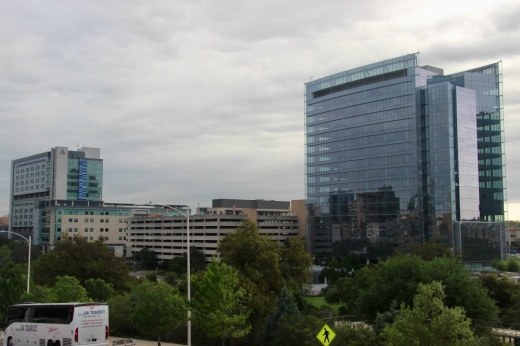In a nutshell
Austin's extensive zoning rulebook includes different land uses that can be allowed on property around town, covering a range of residential, commercial, industrial and civic activities. Mayor Kirk Watson said the city currently doesn't account for some aspects of life sciences, leading him to propose a new use specifically for that sector this spring.
“The Austin region ranks among the top emerging markets for life sciences, so it’s important for the city to make life sciences research accessible to both private and public entities," Watson said. "By allowing this use in city code, we are able to facilitate the growth of the science research industry in Austin while also supporting the Dell Medical School and the city’s innovation district."
City Council signed off on Watson's request for a life sciences designation March 27. Next, the new regulations will be developed and presented for final approval "as soon as feasible," according to the council resolution.
The focus on boosting life sciences comes as the sector has recently experienced growth in Austin, and as city officials have taken steps to back medical and science activity around town.
The context
The first step toward creating the new life sciences use, and other moves aimed at making Austin a life sciences destination, are supported by economic development partnership Opportunity Austin. Its reporting last year pointed to Central Texas becoming well-positioned as a "full-scale life sciences hub" given factors like the local education and workforce pipeline, existing infrastructure and technology base, and innovation-focused capital networks.
Almost 300 life science companies are already doing business in the region, according to Opportunity Austin, with plenty of room for further additions. The entity pointed to updates like diagnostics company BillionToOne's upcoming arrival in Austin at EastVillage and medical technology firm Enovis' Cedar Park expansion as recent examples of the sector's growth.
“The Austin region continues to solidify its position as one of the top emerging markets for life sciences, powered by more than $1 billion in annual research funding, a growing workforce and world-class institutions like Dell Medical School. As the region continues to prioritize innovation, thoughtful policy decisions like this new zoning resolution play an important role in helping the life sciences sector thrive," Opportunity Austin said in a statement.
One local support already in place for startups in the sector is Austin Community College's Bioscience Incubator, which features individual lab space available for lease on the college's Highland campus. Incubator interim Director Nancy Lyon said civic changes that'd help smaller lab spaces grow alongside any larger corporate updates would bring local benefits.
“It just means that the city is paying attention to the life sciences industry, and I think that’s totally positive and fantastic," she said. "There’s large real estate developers and whatnot that are talking about and actively building some lab space, but until that comes online, these build-outs in pockets around town is sort of what’s keeping the industry afloat in terms of the small business, small company, entrepreneurship angle.”
ACC's incubator has already served more than 40 companies, and Lyon said a dozen more may be joining in the near future. The shared workspace allows them to focus on scientific pursuits rather than real estate issues like leasing or lab build-outs, she said, an advantage that other facilities around town could also provide if it's easier for smaller spaces to expand.
"[Life sciences in Austin] is growing. We’ve got companies being acquired, we’ve got other ones growing up into big spaces," she said. "If you use the Google Earth view people probably wouldn’t see it. But if you’re down in it, you definitely see it.”
Zooming in
Compared to Austin, Watson said other cities generally have less restrictive zoning around research and development, which he said can open the door for more innovation. He pointed to City Hall's encouragement of life sciences in Northwest Austin's North Burnet/Gateway Regulating Plan as an example of what his proposed use could promote.
"The goal is to take what we learned from that effort and to apply it citywide," he said.
Jim Davis, interim president of The University of Texas at Austin, also highlighted civic scientific support around the university's J.J. Pickle Research Campus in that area. After last year's planning update in Northwest Austin, Davis said UT is now seeking an anchor tenant that “unlocks the district” around the research campus.
“The city’s been incredibly helpful for UT in many ways, one of which is the zoning change in that area that allows for some lab buildings in that district as well," he said during a March 26 ULI Austin panel. "That kind of city cooperation and city innovation to unlock land in a way that can drive different uses like wet labs ... makes that district special to us still as that future research park.”
The Innovation District in the northeast corner of downtown Austin is another area Watson said he'd hope to see the new life sciences designation put to use, potentially through more partnerships between public and private entities like the several already in place there.
The district running along I-35 south of UT Austin's campus is now home to the Dell Seton Medical Center, UT Health Austin, and the Dell Medical School—a longtime priority of Watson's he helped initiate as a state senator—as well as the Innovation Tower on Waterloo Park.
The Innovation District will also soon be home to other projects like Central Health's mixed-use redevelopment and a city-backed high-rise with affordable housing. A new landmark hospital complex from UT Austin and MD Anderson Cancer Center is also now in planning.





